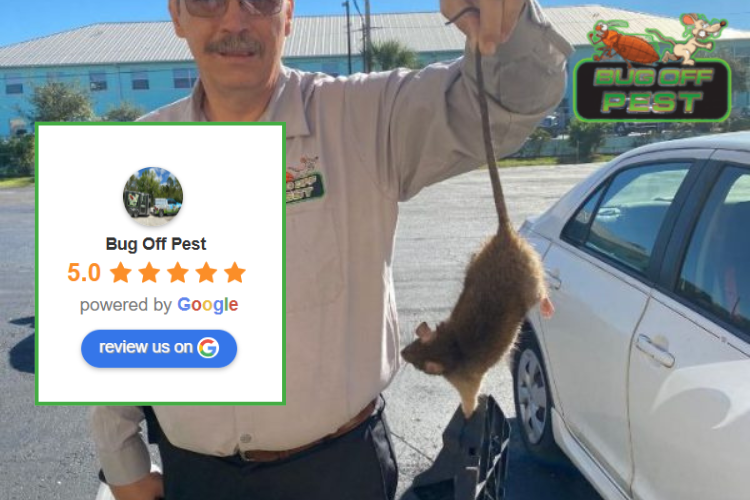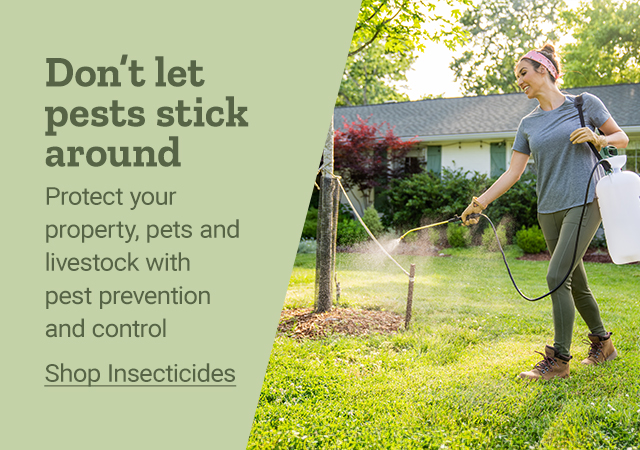Pest Control Services: Keeping Your Home Safe from Dangerous Insects
Learn About the most up to date Breakthroughs in Pest Control and How to Execute Efficient Treatment Solutions
Over the last few years, the field of pest control has witnessed significant advancements, driven by the need for sustainable and effective therapy remedies. Cutting-edge approaches such as Integrated Pest Management (IPM) combine environmentally friendly exercise with innovative modern technology, boosting both efficiency and environmental responsibility. The integration of clever modern technologies and Do it yourself techniques has empowered people to deal with insect problems much more efficiently. As we explore these developments, it comes to be necessary to recognize just how finest to execute these strategies in various setups to achieve optimum results. The effects for insect monitoring methods can be transformative.
Eco-Friendly Pest Control Options
In the last few years, the need for environment-friendly parasite control alternatives has actually risen as companies and property owners alike seek sustainable alternatives to traditional chemical treatments. This shift is driven by expanding ecological recognition and a need to decrease the wellness threats connected with artificial pesticides.

Eco-friendly parasite control techniques encompass a variety of approaches that focus on making use of natural materials and methods. Integrated Insect Management (IPM) is one such strategy, integrating biological, social, and mechanical methods to take care of insect populations while decreasing reliance on chemicals (Wildlife removal services). This holistic approach stresses prevention with habitat control and the intro of all-natural killers, thus cultivating a well balanced ecological community
An additional preferred option is using agricultural pesticides stemmed from plants, which tend to be less harmful to non-target organisms. Products like neem oil and diatomaceous planet have actually gained grip for their performance in controlling bugs while posturing minimal dangers to human wellness and the environment.
Furthermore, exemption strategies, such as sealing entry points and keeping cleanliness, play a critical role in environment-friendly pest management. By embracing these sustainable methods, people and businesses can properly take care of pests while promoting a healthier planet for future generations.
Smart Technology in Insect Administration
Advancement is improving the landscape of bug monitoring, with clever modern technology arising as an essential pressure in boosting effectiveness and efficiency - Wildlife removal services. The combination of Web of Things (IoT) devices, artificial intelligence (AI), and information analytics is revolutionizing how parasite control specialists come close to problems
Smart catches geared up with sensors can spot insect activity in real-time, sending out prompt informs to drivers. This permits prompt feedbacks, decreasing damage and minimizing the demand for considerable therapies. Furthermore, AI algorithms analyze historic information to forecast parasite actions, making it possible for proactive treatments based on environmental conditions and problem patterns.
Drones and automated vehicles are also playing a substantial function in insect administration, providing aerial evaluations of big areas, identifying hotspots, and also distributing targeted therapies. These innovations not just enhance operations however also boost security by restricting human exposure to possibly damaging chemicals.
Furthermore, mobile applications equip customers to keep an eye on pest task and access professional advice, cultivating a collective strategy to pest administration. Overall, the adoption of clever innovation is establishing a brand-new standard in bug control, emphasizing data-driven decisions and lasting techniques that eventually profit both specialists and house owners alike.
Integrated Bug Monitoring Techniques
Integrated Bug Monitoring (IPM) employs an alternative strategy to pest control, integrating numerous strategies to successfully take care of pest populations while decreasing risks to human wellness and the environment. IPM rotates around understanding the pest life process, their all-natural enemies, and the environment in which they grow.
One of the basic components of IPM is monitoring pest populations via routine examinations and information collection. This allows for the recognition of pest thresholds, identifying when intervention is required. Cultural methods, such as plant environment, cleanliness, and rotation manipulation, are necessary in lowering parasite prevalence and advertising plant wellness.
Mechanical controls, consisting of catches and obstacles, are likewise essential in IPM. These methods can literally get rid of or hinder pests without the usage of chemicals. When essential, the judicious application of chemical controls is used, focusing on targeted treatments that minimize environmental impact.
Education and learning and partnership among stakeholders, consisting of farmers, bug control experts, and the community, are crucial for the effective application of IPM strategies. By focusing on sustainable techniques, IPM not only addresses pest issues yet likewise fosters a healthier community.
Biological Control Approaches
Various organic control techniques are increasingly identified for their efficiency in taking care of bug populations while advertising ecological equilibrium. These methods harness all-natural killers, parasites, and virus to minimize pest numbers without depending on synthetic chemicals. For circumstances, the introduction of ladybugs can efficiently manage aphid populations, while nematodes target soil-dwelling bug larvae.
Furthermore, the use of microbial pesticides, such as Bacillus thuringiensis (Bt), gives an eco-friendly choice for managing caterpillar parasites. These products especially target pest species, decreasing damage to valuable pests you could try this out and pollinators. Moreover, conservation biological control highlights boosting habitats for natural opponents, such as birds and valuable insects, thus urging their presence in agricultural systems.
Research study continues to disclose ingenious techniques within this area, such as making use of scents to disrupt pest mating patterns or the development of biocontrol agents with genetic modification. Carrying out these methods can lead to sustainable pest management practices that reduce the reliance on chemical interventions, ultimately fostering much healthier communities. As awareness of these techniques grows, they are becoming check it out integral components of incorporated parasite administration (IPM) methods, using an equilibrium in between effective bug control and environmental stewardship.
DIY Insect Control Solutions
As house owners seek effective ways to deal with pest issues, DIY bug control remedies have actually gained appeal for their ease of access and cost-effectiveness. These methods empower individuals to deal with invasions making use of easily offered products and methods, typically without the need for professional treatment.

Additionally, maintaining proper cleanliness and regular evaluations can avoid insect entrance and nesting (Wildlife removal services). Basic techniques, such as securing fractures, eliminating food sources, and decluttering, can substantially lessen parasite populations. Traps, both homemade and readily available, can additionally use effective remedies for tracking and controlling certain insects like pests or rodents

Verdict
The integration of green bug control choices, clever technology, and ingenious monitoring strategies provides a thorough method to efficient parasite management. By accepting Integrated Parasite Monitoring (IPM) and utilizing biological control techniques, alongside DIY services, liable and sustainable parasite control can be attained.
Green parasite control approaches incorporate an array of strategies that prioritize the use of natural compounds and methods. Integrated Bug Monitoring (IPM) is one such strategy, combining biological, cultural, and mechanical strategies to take care of pest populations while lowering dependence on chemicals. As understanding of these strategies expands, they read this post here are ending up being essential components of integrated bug management (IPM) strategies, using an equilibrium between efficient parasite control and ecological stewardship.
The integration of environment-friendly pest control options, clever technology, and ingenious monitoring approaches presents an extensive technique to efficient bug management. By embracing Integrated Pest Monitoring (IPM) and using organic control techniques, alongside DIY solutions, accountable and sustainable parasite control can be accomplished.